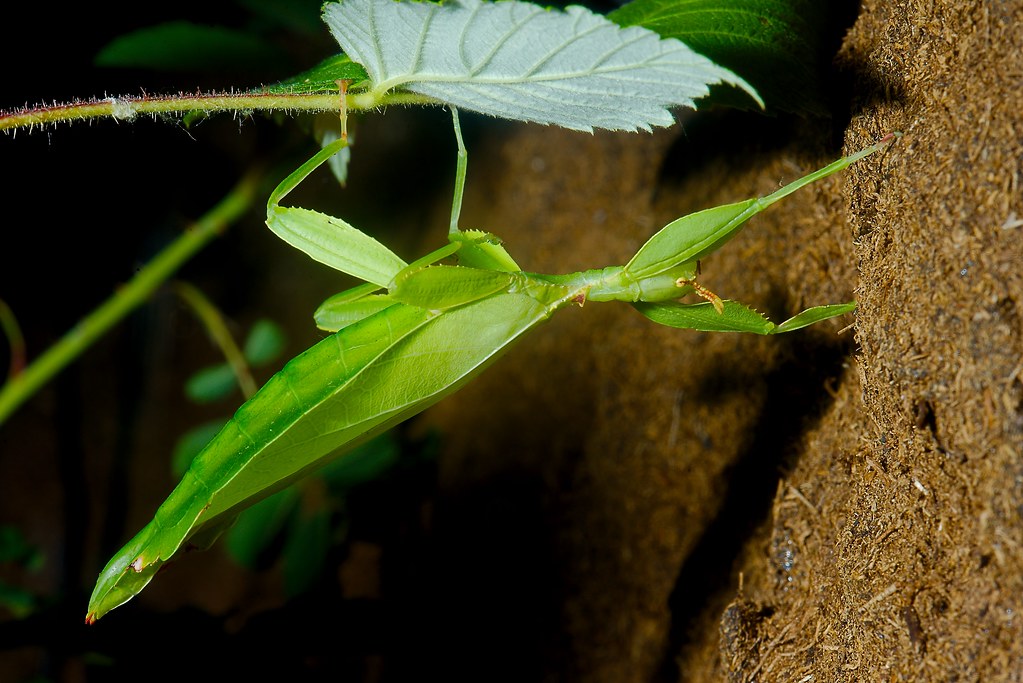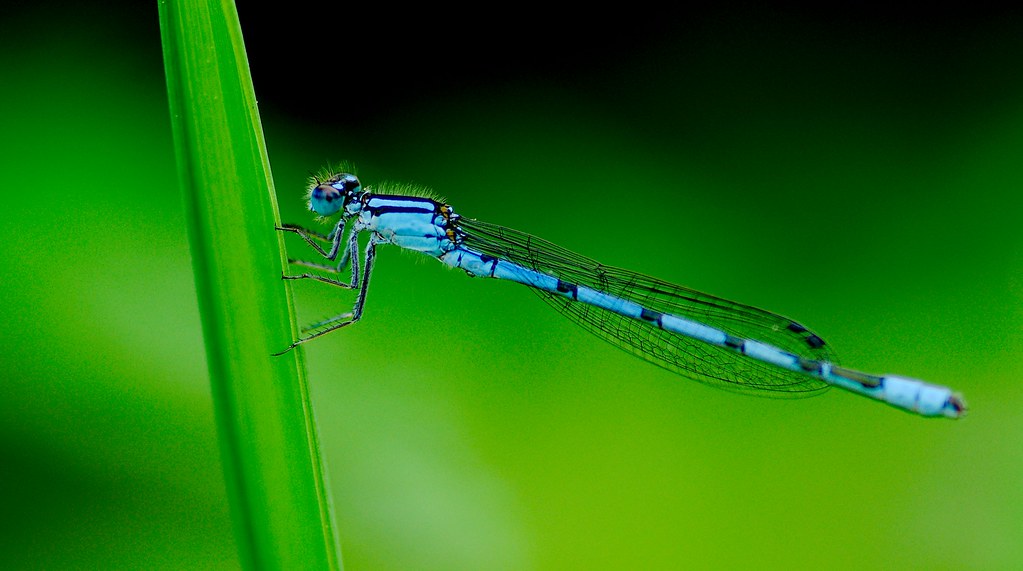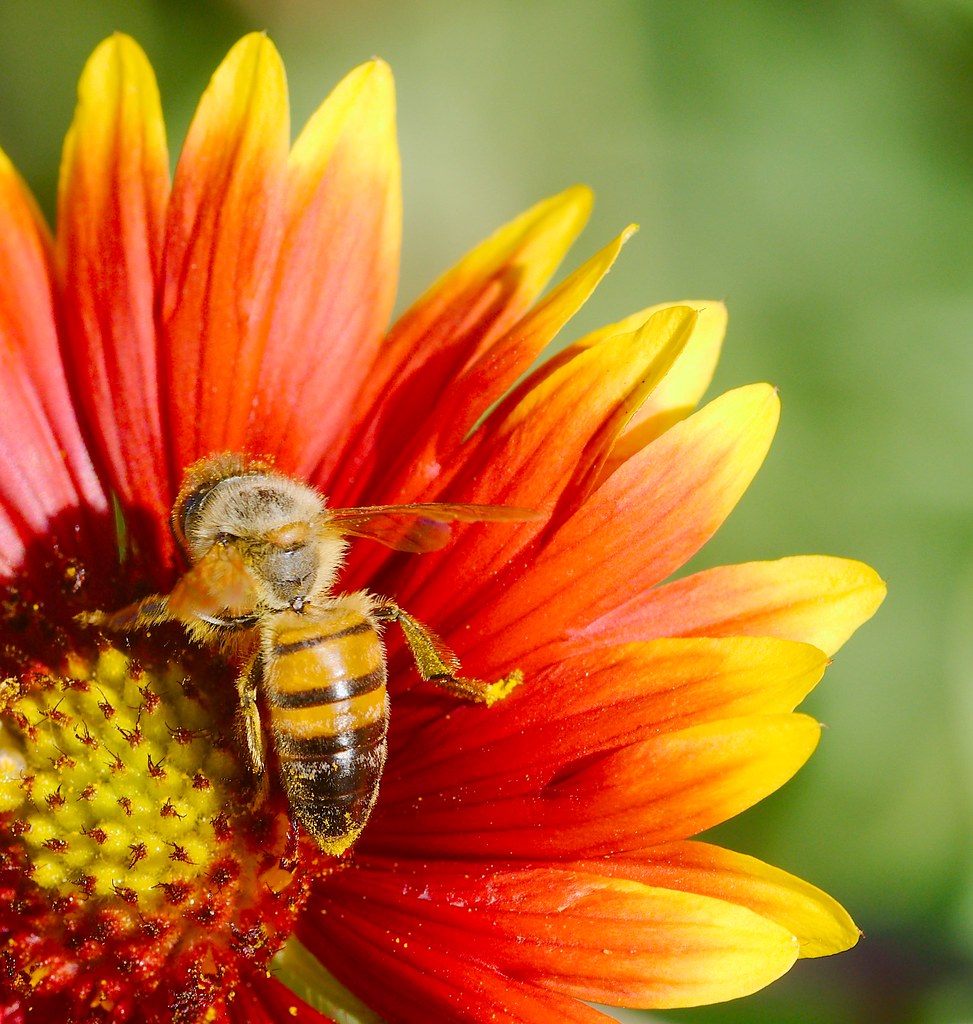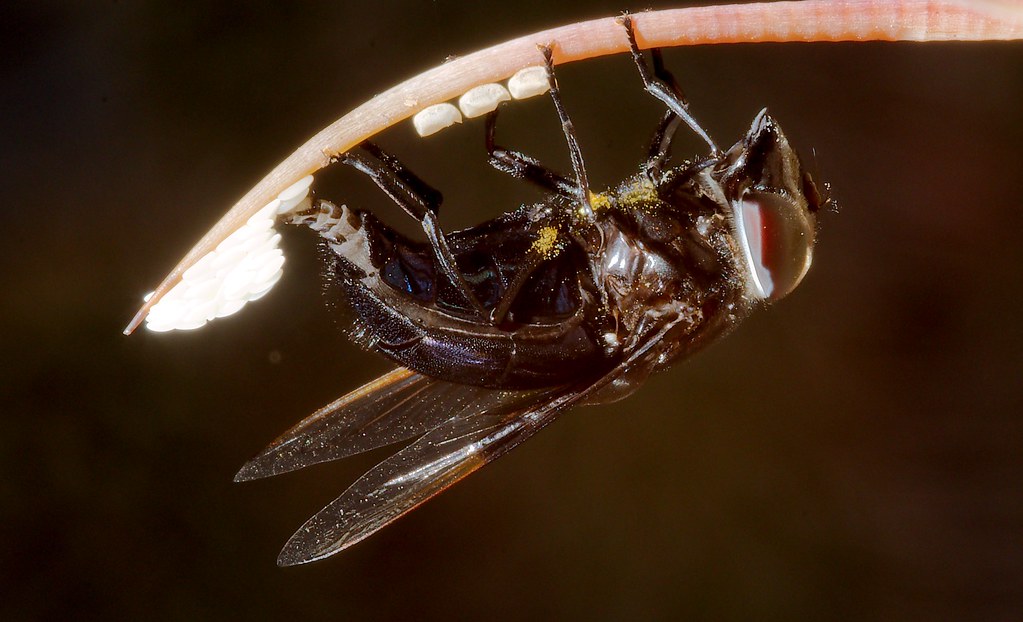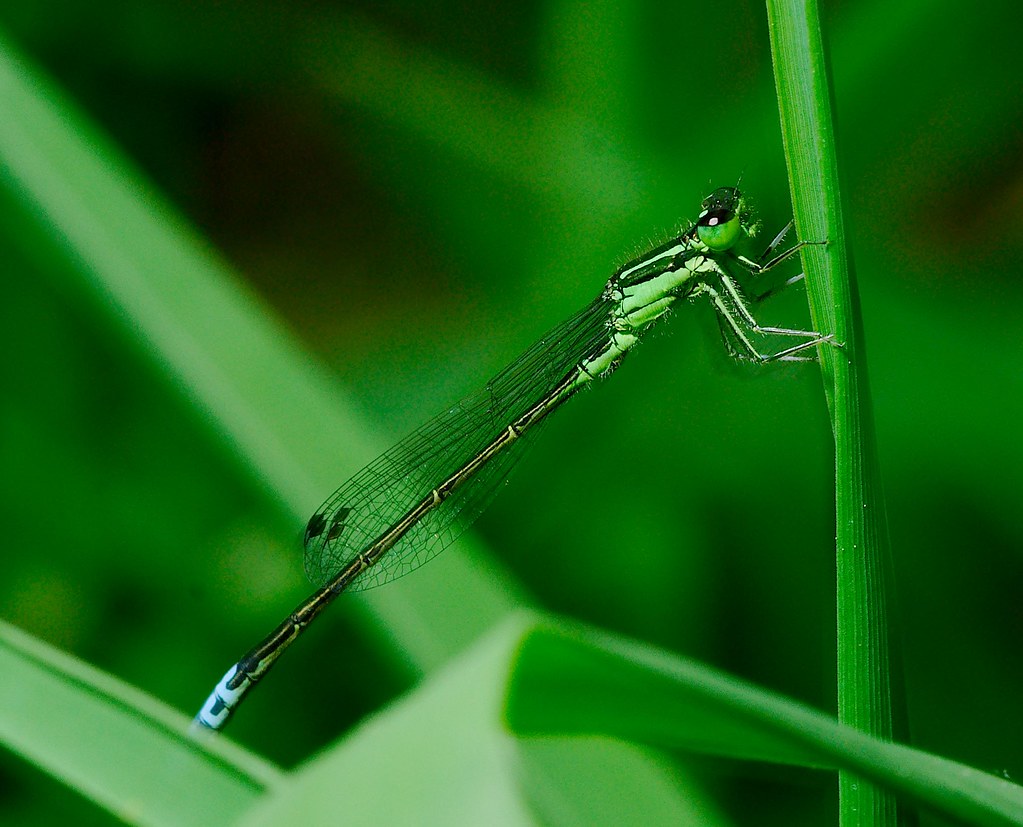Category Archives: Insect
Moving Leaf Insect (Phyllium celebicum)
Giant Jumping Stick (Stiphra sp.)
Damselfly
If you were to cling to a massively tall blade of grass, you’d probably grab onto the outsides of the blade with your hands and feet and cling on for dear life.
Look at the damselfly’s feet. It’s actually holding onto each side of the blade as if that side of its body is separate from the other. In effect, if you cut it in half, each half would still be holding onto the blade.
Bee
Bee laying eggs
When I was walking in the desert (the botanical garden, to be precise), I noticed a black bee hovering near me. When I was last in Arizona, I had seen similar behavior when a male was attempting to attract the attention of a female. This time, though, there was only one. Since it seemed likely to hang around for a while, I started setting up my lights. As I did so it landed on the underside of a spine and I thought I might get a chance to get some nice close ups. As I worked, I noticed that it was laying eggs. Lots of eggs.
It clung there and laid eggs for about ten minutes, then flew off. This shot was right as the last eggs was being laid. The things you can see here are amazing.
* Fresh eggs are whiter than white. You can see older eggs of other insects further up the spine that are darker.
* These bees lay a lot of eggs. Far more than I had thought they would.
* You can see the pollen on the legs of the bee. Apparently laying eggs just something you do between meals.
* Bees have hairy eyes. I’ve noticed this before, but it still seems weird to me.
After this, I started looking under the spines of other cacti and there are tons of eggs there. I guess it makes sense since insects lay eggs under leaves in forests, and these are just desert leaves. Still, it’s pretty neat to watch.
Damsel Fly
Monarch Butterfly (Danaus plexippus)
Monarch Butterfly (Danaus plexippus)
A serious post this time.
Monarch butterflies have a multi-generational migratory cycle. It takes up to four generations for them to flutter between Canada and Mexico every season. As one generation dies, the next one is born hatched. However, monarch caterpillars only eat milkweed. If there’s none available at the stopping place, an entire line of butterflies will die out. As a single species, the monarch illustrates both the complexity and fragility of life. Sadly, we are on the cusp of losing them forever.
In the Winter, monarchs form clusters (or roosts) on branches. This photo is from California, which represents a different set of monarchs. The photographs from Mexico (the primary migrating population) are stunning. I hope to get there some day. The University of Minnesota has a good overview of what happens.
Today, though we’ve answered the question of “Where do the monarchs go?”, we still haven’t figured out how best to protect them. That’s where Monarch Watch comes in. Through a capture and release program, you (as a civilian scientist) can add data to the conservation efforts. By creating monarch waystations, you can help them along their long journey.
When I first went monarch tagging, and I caught (gently) that first butterfly, it nothing like what I had expected. When you take a monarch from the net, you suddenly know, at level deeper than knowledge, how fragile nature can be. When you hold its wings to tag it, you suddenly realize how strong nature can be too. If you have never had that experience, you’re missing out. You owe it to yourself, and future generations, to get involved with the monarch project, at least once.
Bring a friend.

